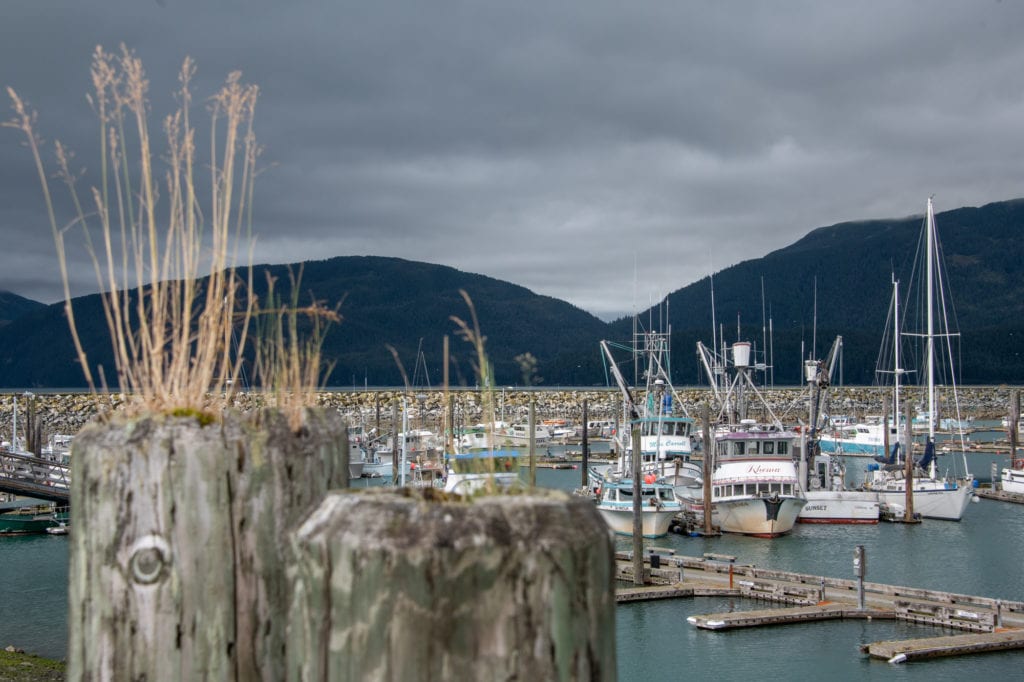
Harvests of pink and coho salmon in commercial fisheries boosted the Prince William Sound commercial catch to 24.7 million fish through Tuesday, Sept. 8, as the winddown of the 2020 season continued.
Preliminary commercial catch numbers released by the Alaska Department of Fish and Game put the catch of all five species of salmon in Prince William Sound at 21.6 million pink, 2 million chum, 936,000 sockeye, 206,000 coho and 400,000 Chinook.
ADF&G fisheries biologists Jeremy Botz and Charlie Russell in Cordova opened the Copper River and Bering River districts for a 12-hour commercial fishing period on Thursday, Sept. 10.
Statewide preliminary commercial salmon harvest results showed a catch of over 110 million fish, including 56.6 million pink, 45.3 million sockeye, 6.3 million chum, 1.7 million coho and 227,000 Chinook.
Overall some 500 million pounds of salmon have been landed this season (based on historical average fish weights), said Garrett Evridge, of the McDowelll Group, who compiles in-season weekly reports on the commercial salmon fishery on behalf of the Alaska Seafood Marketing Institute.
Evridge noted that sockeye have contributed 48 percent of the total harvest, followed by humpies with 40 percent, keta for about 10 percent and Chinook less than 3 percent.
Some 90,000 red salmon were harvested last week, with nearly all volume coming from Kodiak and the Alaska Peninsula and Aleutian Islands region, he said. Few more sockeye are expected to be caught this season. The statewide total of 45 million reds is nearly on par with the 10-year average, but about 15 percent below the five-year average, Evridge said.
The year-to-date humpy harvest of over 56 million fish includes nearly one million fish from Kodiak and Prince William Sound. About 17 million more pink have been harvested in 2020 than in 2018, or about 60 million pounds.
Keta and coho landings meanwhile are 66 percent and 52 percent respectively behind the five-year average, he said.
The harvest of Chinooks this summer also is about 19 percent behind 2019, although a bigger catch by Southeast Alaska fishermen put that region 9 percent ahead on kings over last year.
On the retail side in Anchorage fresh off the boat wild coho salmon fillets were $10.25 a pound at 10th&M Seafoods, while online retailer FishEx had fresh Copper River sockeye premium portions for $44.95 a pound.
The Bristol Bay Regional Seafood Development Association also cited another successful season, the novel coronavirus pandemic notwithstanding.
“The fleet in Bristol Bay showed true strength and resiliency this season, pulling in strong harvest numbers in the face of the huge logistical challenges presented by the COVID-19 pandemic,” said Andy Wink, executive director of the BBRSDA. “Together, Bristol Bay’s fishermen, processors, medical personnel, support businesses and government agencies worked together to execute a safe and successful season without community spread or COVID hospitalizations, and in doing so provided another extraordinary bounty of wild sockeye salmon for people around the world.”
Wink said that grocery and seafood retailers took note of this year’s harvest of nearly 40 million sockeye, with several new partners signing on for summertime promotions of fresh red salmon from Bristol Bay. Eight retail chains with over 1,200 individual stores hosted branded Bristol Bay sockeye promotions or promoted salmon from Bristol Bay online, with many seeing significant sales gains, Wink said.
Spokane-based Rosauers Supermarkets saw a dramatic sales increase of more than 120 percent in both volume and revenue over the previous year’s non-promotion sales period. Other prominent retailers promoting fresh Bristol Bay sockeye in stores and online included H-E-B, Heinen’s, Hy-Vee, QFC, Raley’s and Whole Foods.





